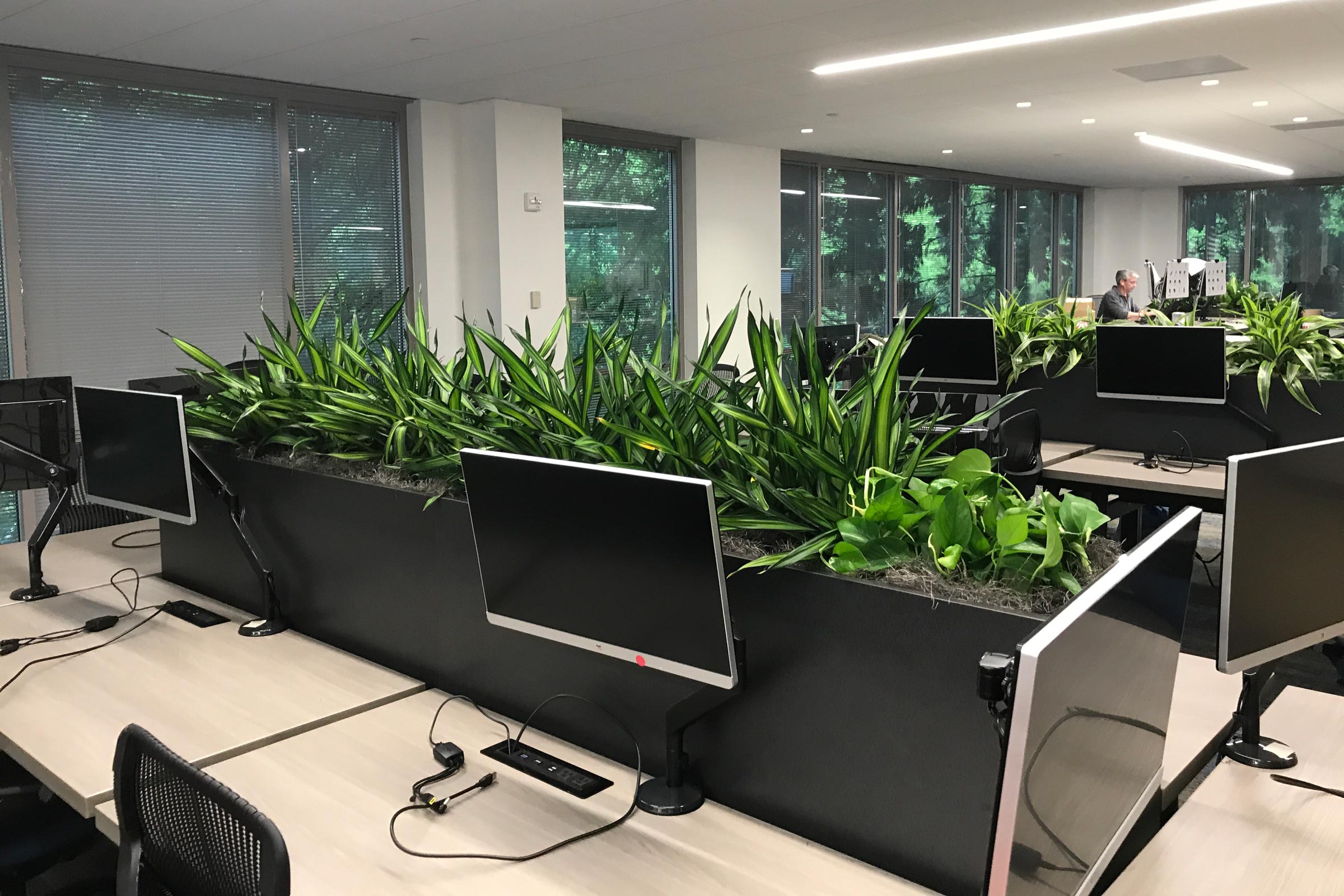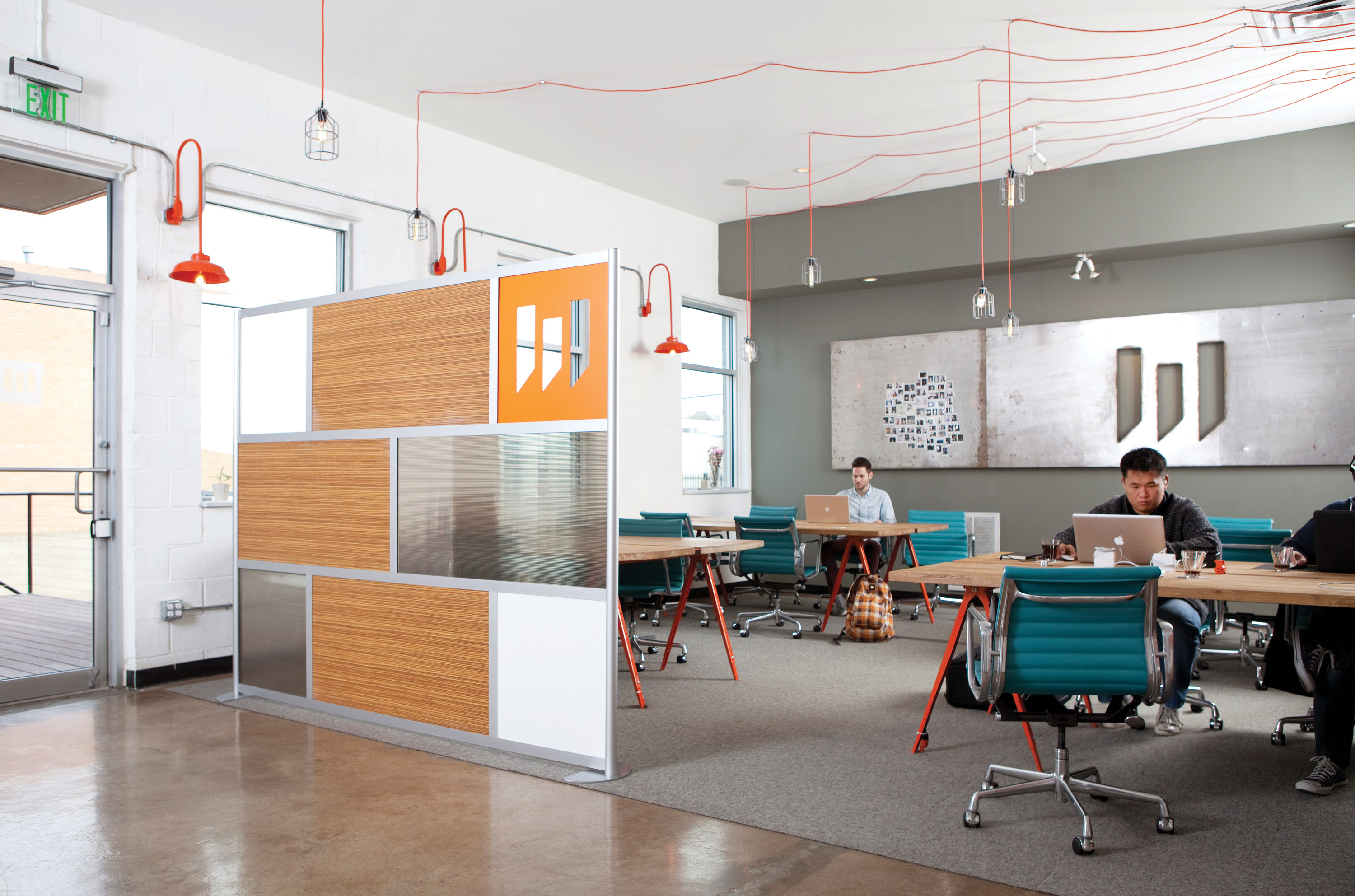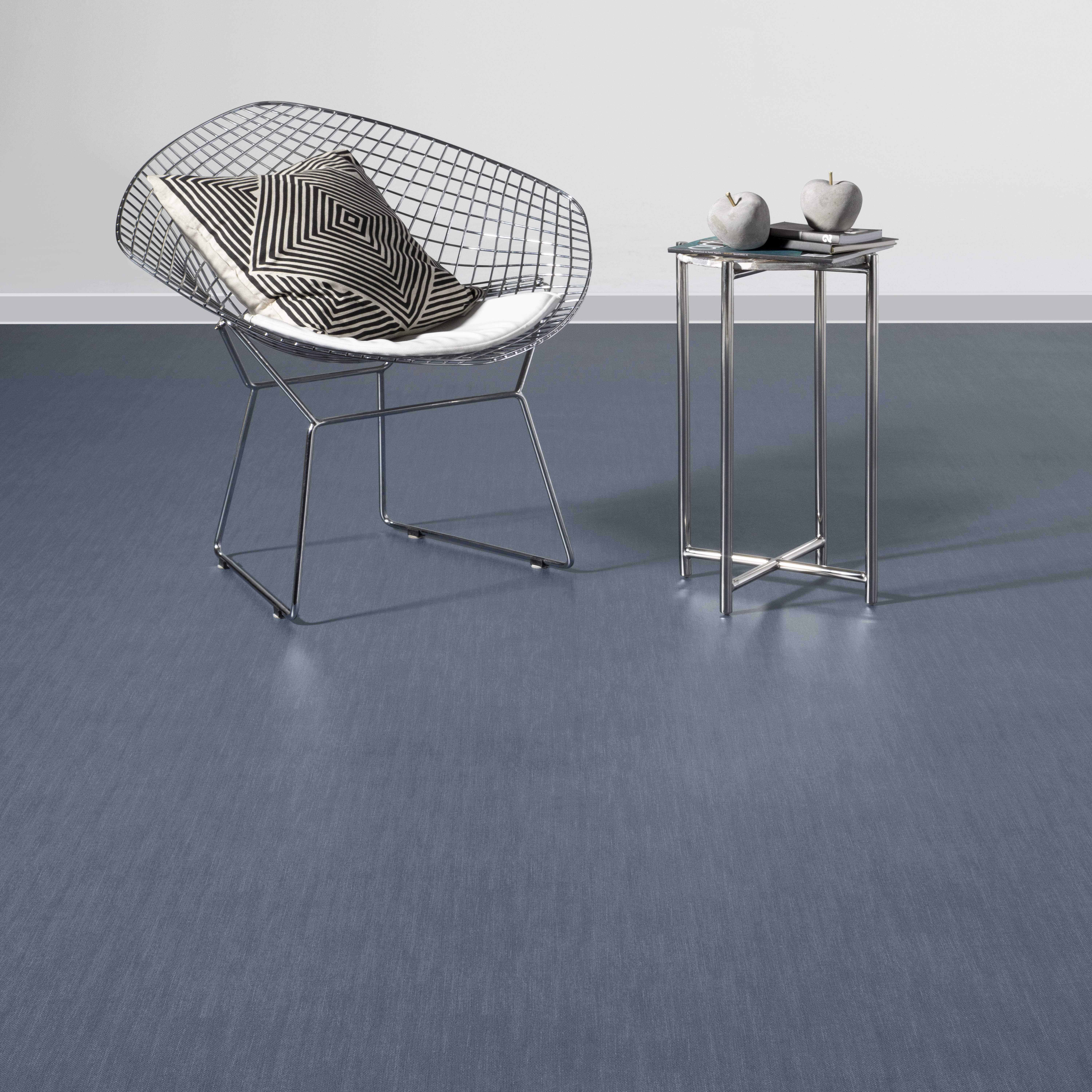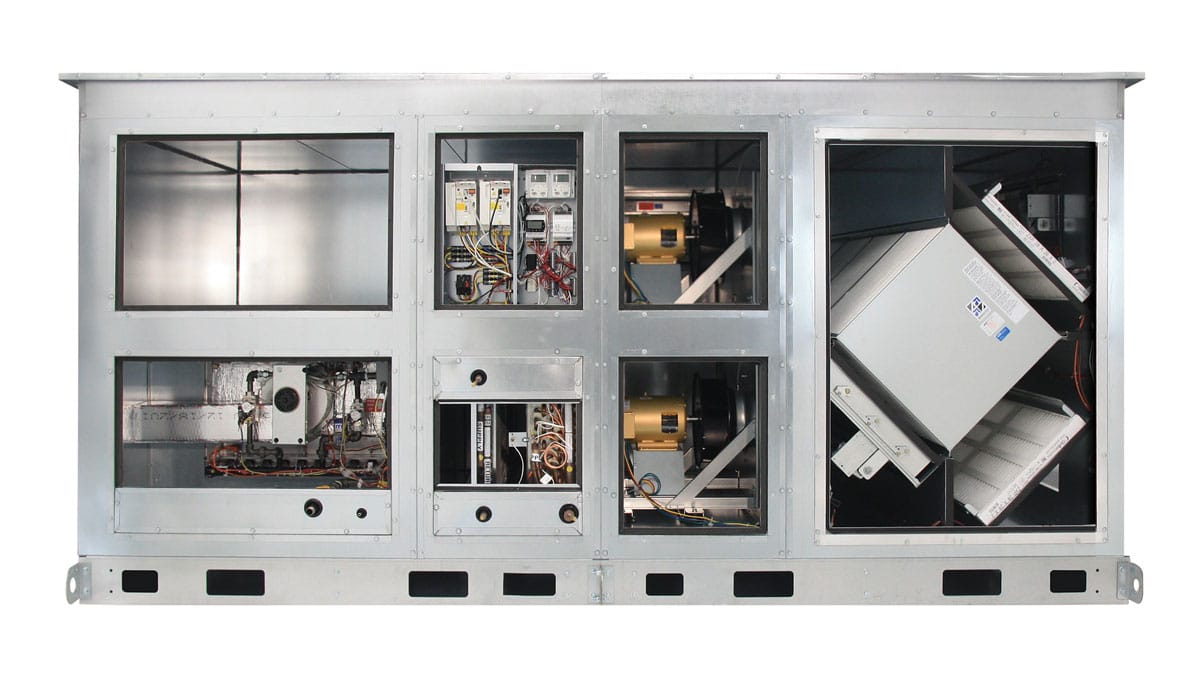
Ambius’ clients say having consistency across workplace locations is comforting, and often that means plants. Photo courtesy of Lendlease Properties
For years we’ve been breaking down barriers, getting rid of cubicles, and incorporating collaborative space in the workplace. The open office became the norm. Now, in the midst of COVID-19, everyone is taking a step—make that many steps—back, asking, “How can we continue to do great work while social distancing?”
The folks at Cushman & Wakefield have more than a few ideas, including the six-foot office. While it’s sure to evolve, the six-foot office concept consists of six key elements, including a thorough scan of the current working environment, a clear list of rules, a visual and unique traffic flow for each office, a six-foot workstation, an advisor, and certification.
We’ve been hearing a lot about what folks are already doing and planning to do to address the changing needs of the modern workplace. It’s certain to be a hot topic at this year’s NeoConnect, NeoCon’s 2020 digital community hub. While NeoCon has brought the commercial design industry together in Chicago every June for more than 50 years, the current pandemic has put that conference, at least physically, on hold. Even so, it may be more important than ever for us to share ideas. And so NeoCon is launching its NeoConnect hub in June 2020, offering up online resources, programming, and events from NeoCon and its exhibitors, media, and association partners, at neocon.com.
Just what will the office of the future look like? Will we put up walls? And if so, how might those work? Will we add plexiglass to existing workstations? What about privacy pods? Will we work in staggered shifts? Add plantlife? These are just a few of the possibilities everyone’s talking about.

LOFTwall offers flexible office solutions. [Photo: Justin Clemons]
Solving the Open Office
Room dividers and movable walls have long been solving open office challenges, and they may be more crucial now than ever.
Take LOFTwall, for example. Their flexible, creative, and non-corporate–looking room dividers bring focus back to the workplace, but they could also provide a useful separation between colleagues.
LOFTwall’s core design, FRAMEwall, allows companies to choose panels from around 30 finishes that fit into frames made out of 70% recycled aluminum. Other designs include FLOX, made of renewable wool and designed to absorb noise; WAVEwall, which brings the visual punch of ribbon-like panels to a space; and DESKdivider, which mounts to desk- and tabletops, offering low-height separation that balances privacy with openness.
Then there’s Moderco, with its operable glass partitions. Perhaps a more permanent solution, Moderco’s partitions meet acoustical ratings while allowing sunlight to flow through, keeping occupants happy. For those not interested in glass, the company offers a full scope of solutions, too, including accordion doors and electrically operated partitions.
The world’s largest producer of operable walls, though, is Modernfold. Their movable wall concepts not only offer affordable workplace flexibility, they provide acoustic control, can be fully automatic, and still allow for plenty of daylight.
Can Plants Help?
But how do we avoid going back to the sterile, cold-feeling offices of decades past when putting up walls and barriers? Some say the answer is biophilic design.
Countless studies have proven the positive effects of biophilic design on people in the workplace, and who can argue with wanting to spruce up the place with a few plants? Integrating views to nature into an office space can save more than $2,000 per employee per year in office costs, whereas over $93 million could be saved annually in health care costs as a result of providing patients with views to nature, according to research from sustainability consulting firm Terrapin Bright Green.
Ambius has been leading the way in biophilic design for decades, from large living green walls to container plants and even scenting solutions. As the world’s largest interior landscaping organization, Ambius was one of the first companies to begin talking about how offices could look different (more plants) and be worth it (employee well-being). Their solutions are easy to incorporate in any project, and their teams offer up full design and maintenance services, too.
Sagegreenlife also helps workplaces come to life with biophilic design. This Chicago-based company offers solutions like indoor living plant walls, freestanding plant walls, and more.

Courtesy of Teknoflor
The Need for Easy to Clean Surfaces
The fear of spreading germs is real. While health care spaces have long been incorporating easy to clean surfaces for this purpose, other projects are now looking for solutions more seriously.
Rubber flooring from Mondo is highly resistant to shrinking and cracking and is free of Red List ingredients (those building materials deemed harmful to humans and the environment), according to Fernanda Coin, Canadian sales manager for Mondo Contract Flooring.
Similarly, Roppe’s rubber flooring is also easy to clean and maintain, and it’s Red List ingredient–free.
New products from Teknoflor are among some of the most exciting new offerings in this space. Their Naturescapes HPD, a polyurethane sheet flooring product, was the first hardsurface flooring product in the world to receive Living Product Challenge Petal Certification by the International Living Future Institute. Teknoflor is now part of global flooring manufacturer HMTX Industries.

RenewAire’s ERVs help to make modern buildings even safer. Photo courtesy of RenewAire
How Can We Improve Indoor Air Quality?
At the end of the day, it’s not just about the surfaces we pass over or the spaces we sit at. Making healthy spaces also means accounting for things you cannot see. So how can we make sure we’re breathing safely when we’re inside all day?
Filtration Group is a leader in air quality solutions, and their offerings include filters that go above and beyond the standard when it comes to removing the dust, bacteria, and smoke particles that can carry viruses and otherwise damage occupants’ health.
Energy Recovery Ventilation (ERV) technology can also play a big role in improving workspaces. The experts at RenewAire, a pioneer in ERV technologies for more than 35 years, say increased energy-recovery ventilation leads to optimal IAQ.
The premise of ventilation is simple: It’s the indoor-outdoor exchange of air. “It’s like how the solution to pollution is dilution,” says Nick Agopian, vice president of sales and marketing at RenewAire. “You’re essentially taking everything in that air—the gases, the chemicals, the particulates, the microbials—and replacing it with something cleaner.”
RenewAire’s products don’t just ventilate; they offer energy recovery as the air is moved in and out of a space, optimizing efficiency while ensuring optimal IAQ.
Visit neocon.com for more solutions and conversations around designing for the future as part of NeoConnect.
